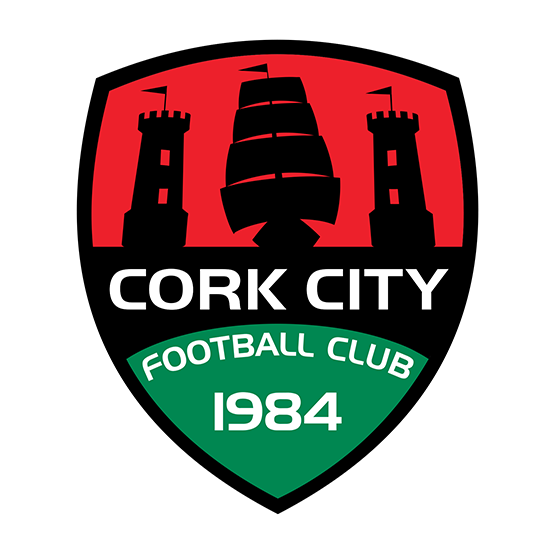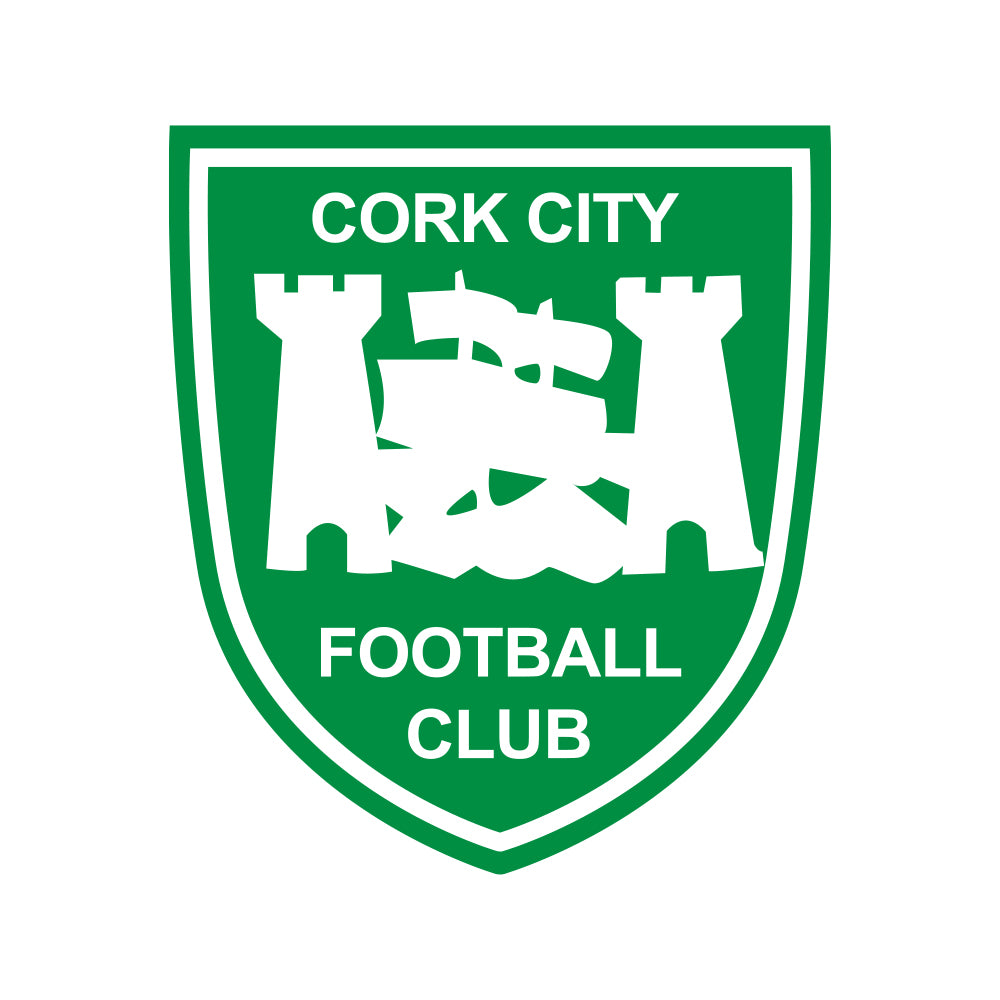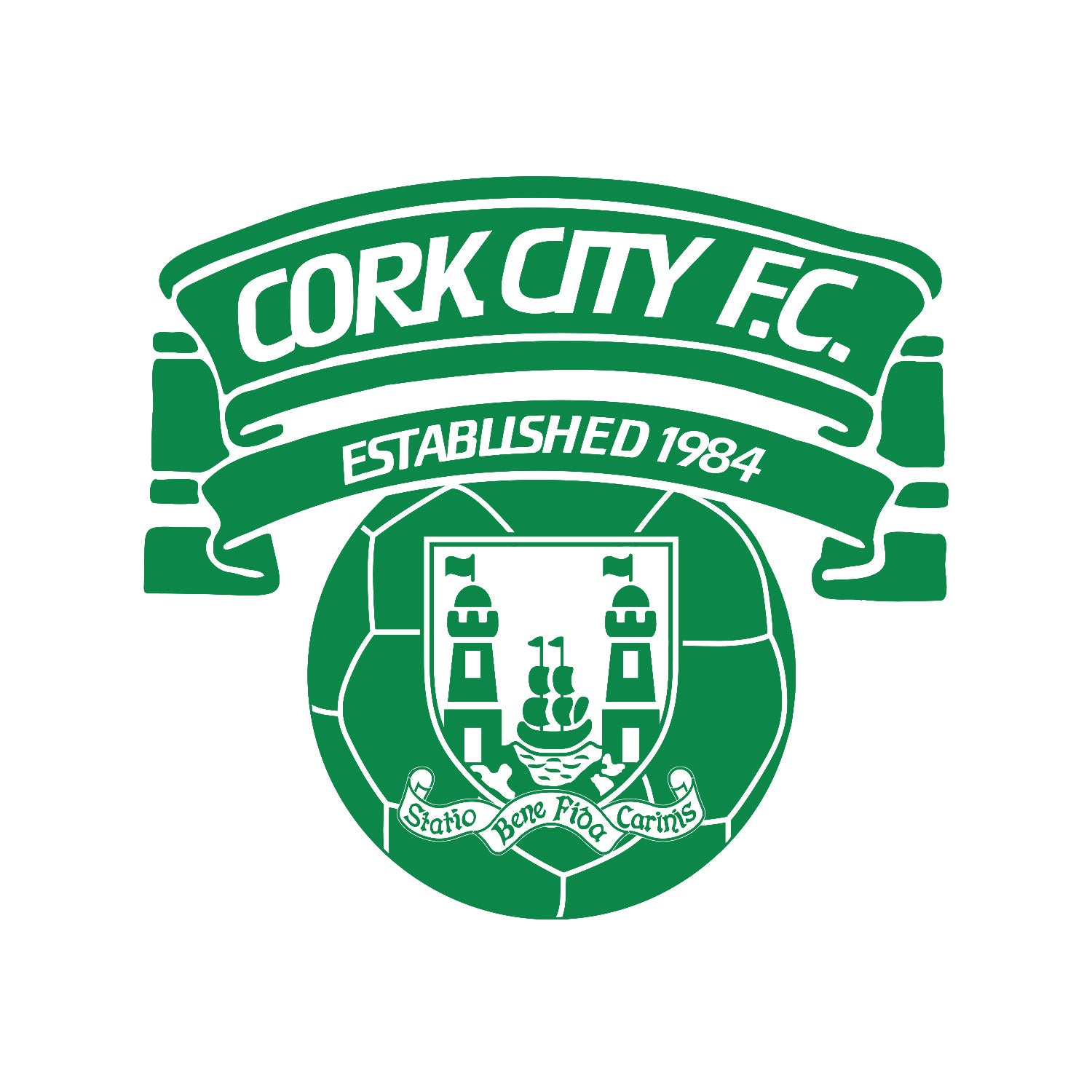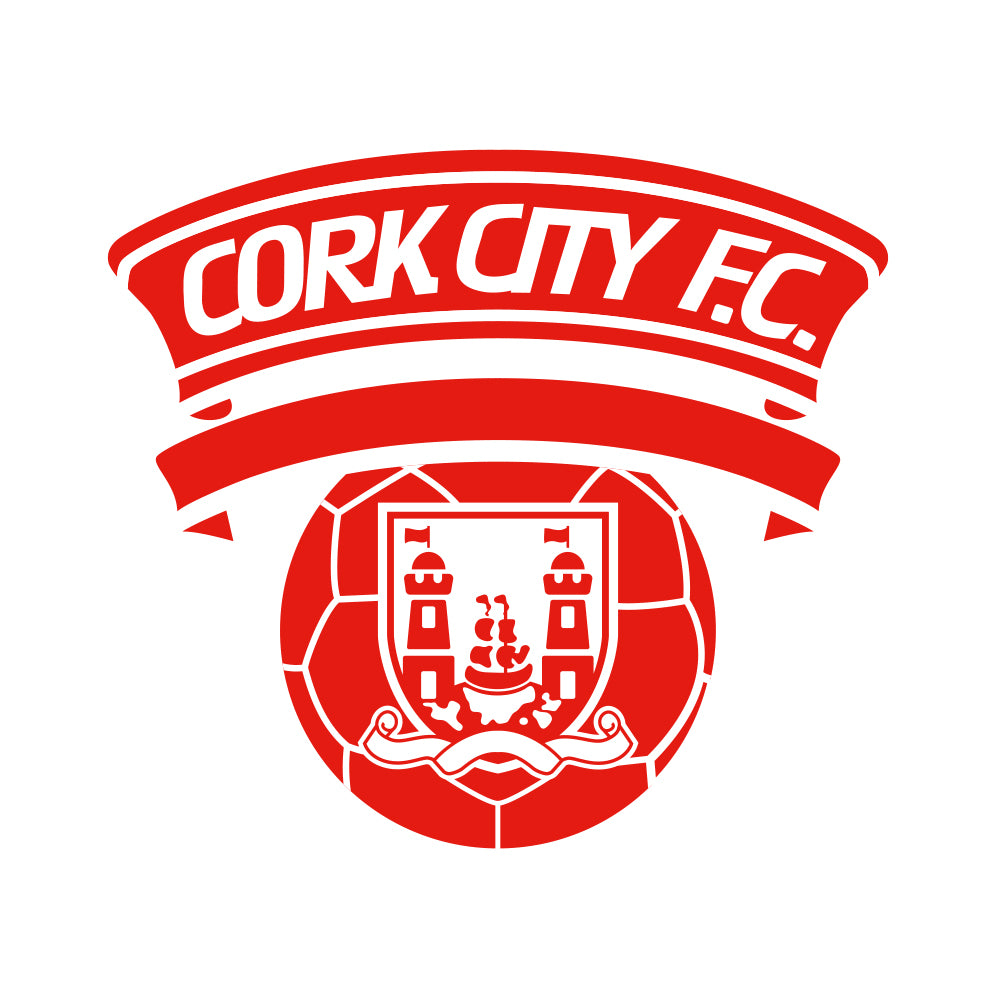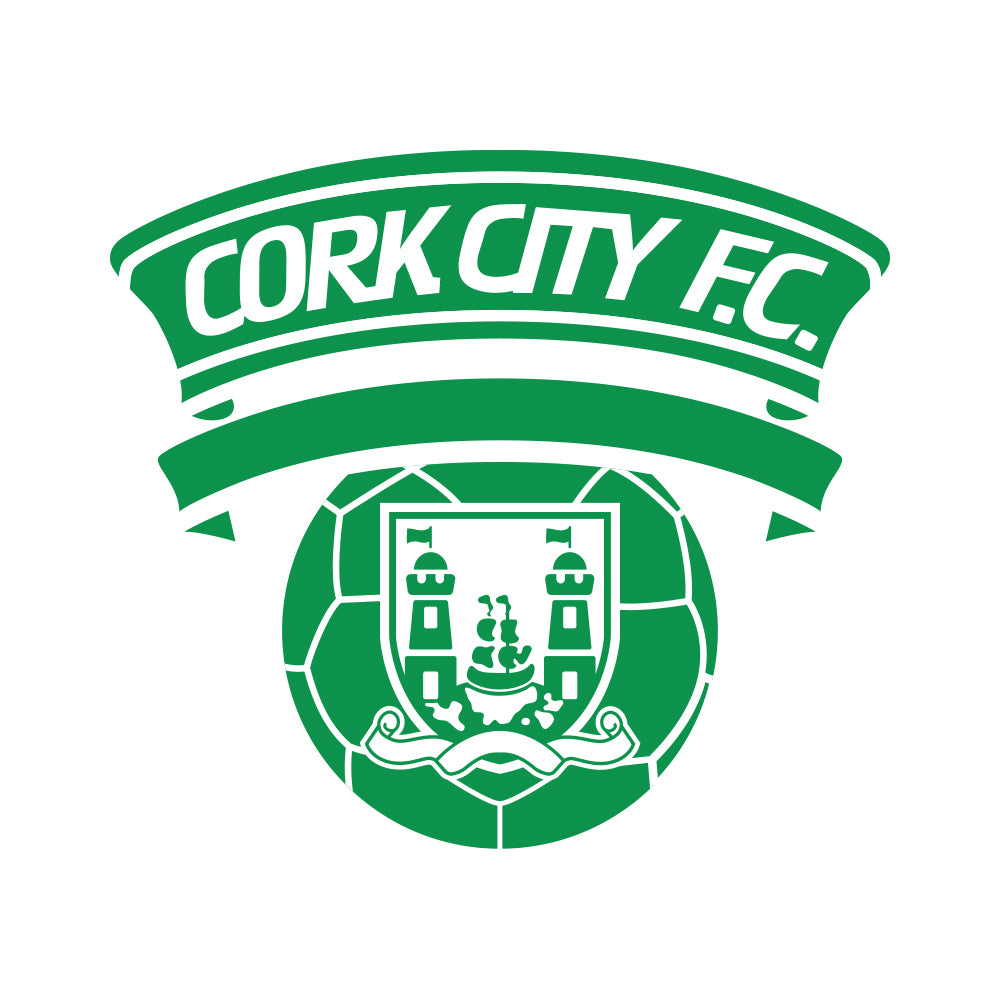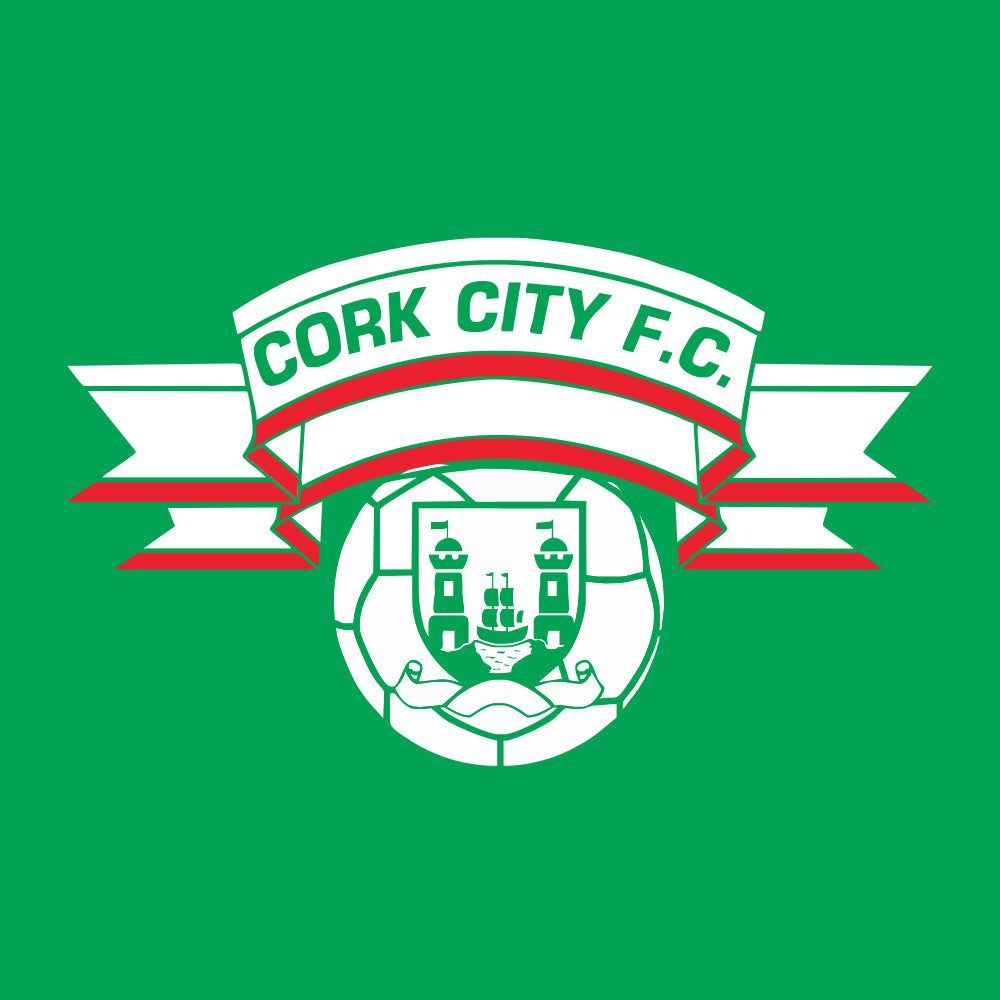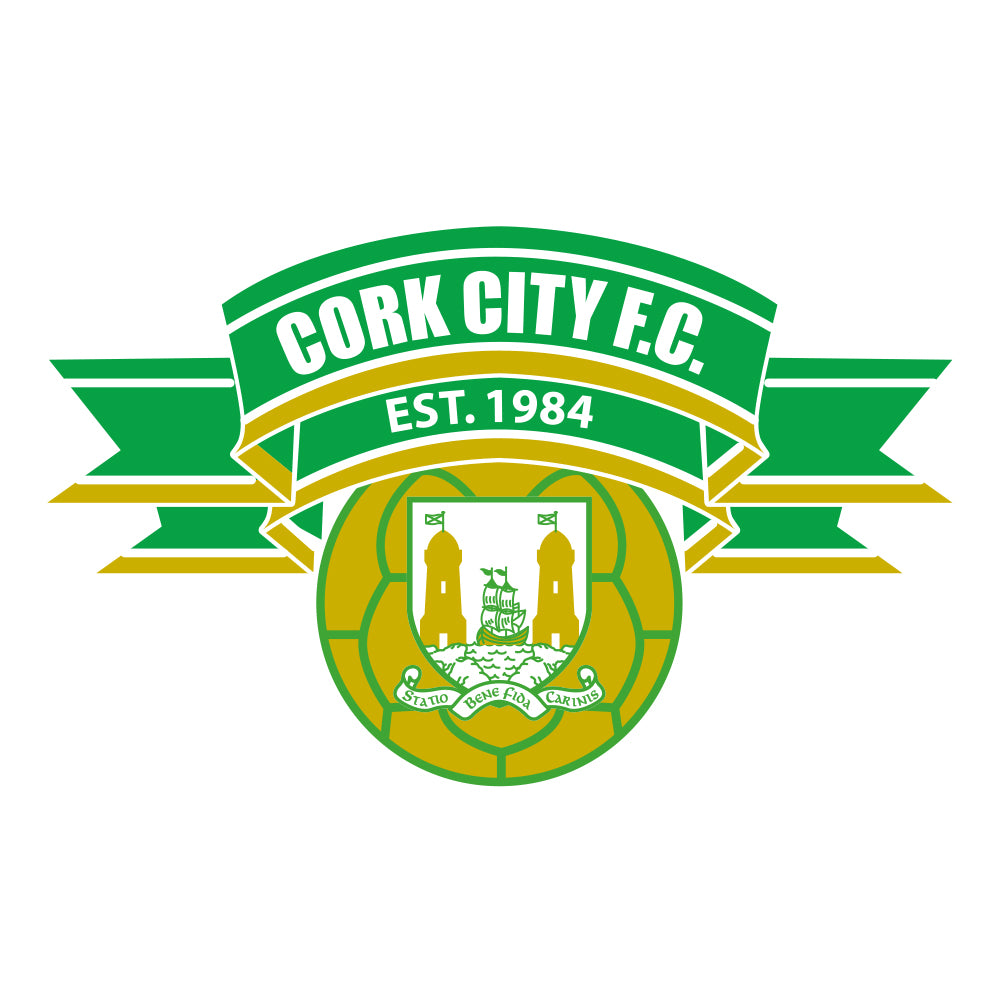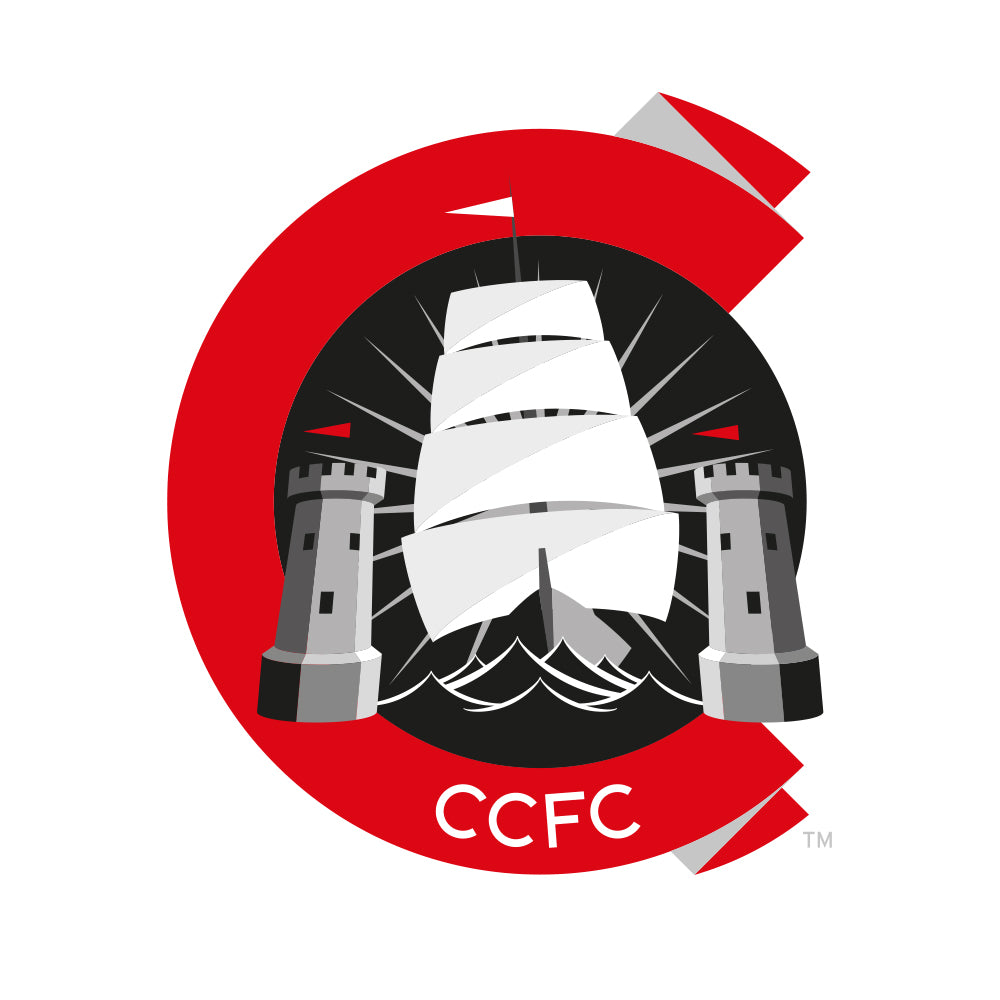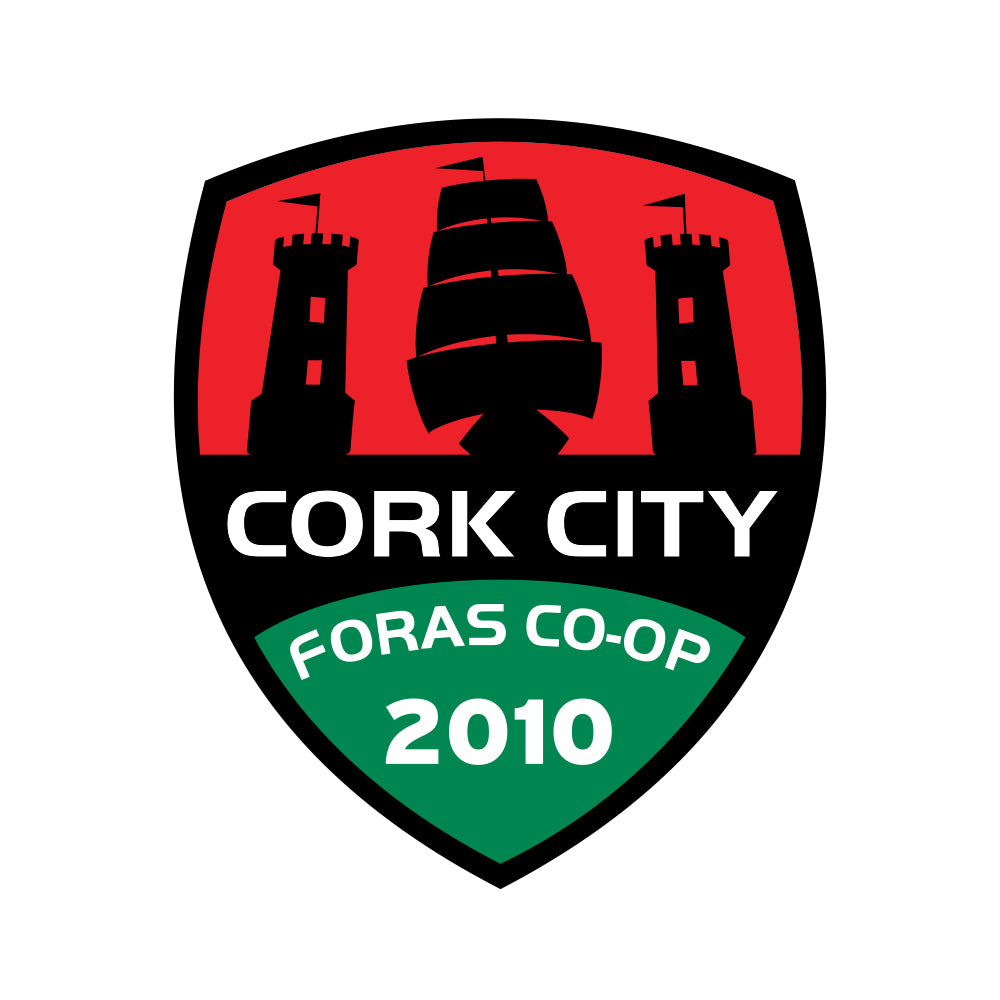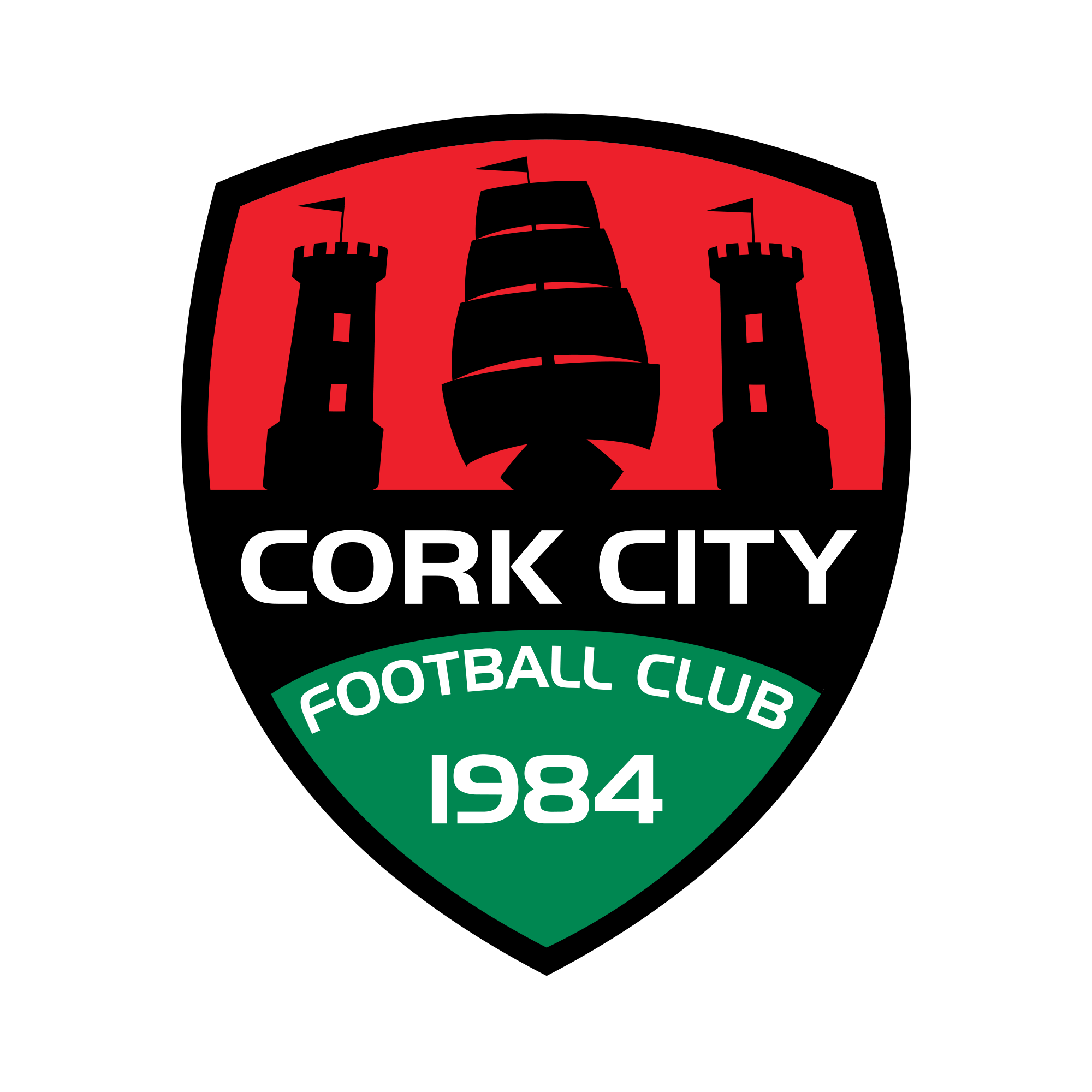Crests
Cork City FC – The History of the Crest
by Michael Hayes & Declan Carey.
Before the formation of Cork City Football Club in 1984, two clubs, Cork Hibernians and Cork Celtic regularly vied for dominance in The People’s Republic and Ireland’s largest county. Both Cork clubs eventually folded; Hibs in 1977 and Celtic in ’79, both citing financial difficulties for their demise. Cork United filled the gap between 1979 and 1982, before also going bankrupt. This led to the birth of Cork City Football Club, founded by members of a number of existing or recently folded clubs. Former Cork Celtic player and manager (and legendary Chelsea forward) Bobby Tambling became the club’s first coach, although he lasted only 13 games before being replaced by Tony Allen.
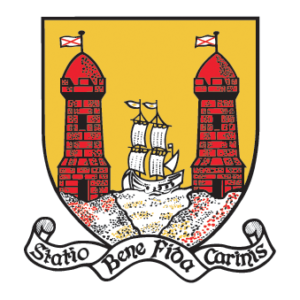
The Cork coat of arms
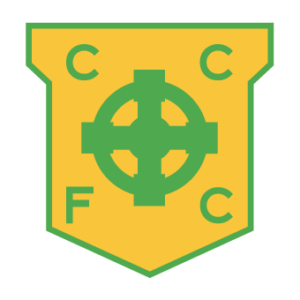
Cork Celtic FC
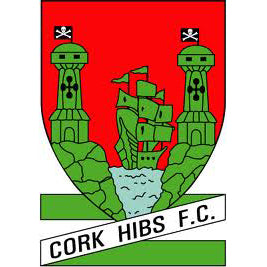
Cork Hibernian FC
